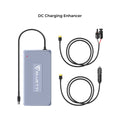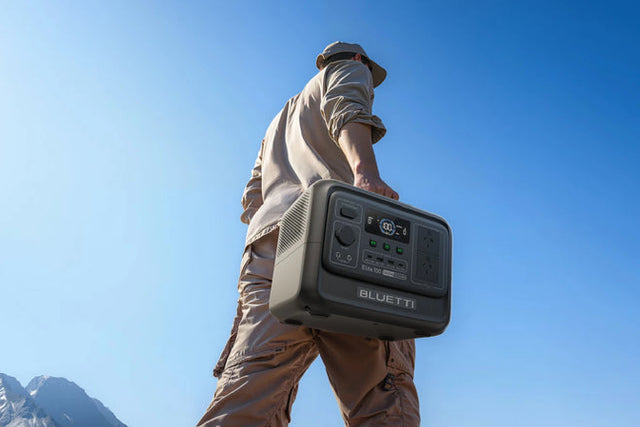How is solar energy stored?
Solar energy has become a buzzword in recent years, with more and more people turning towards renewable sources of energy to combat the harmful effects of climate change. While solar panels are a popular way to harness the sun's energy, many are still not aware of how this renewable energy is stored for later use. In this article, we will delve into the intricacies of solar energy storage, its importance in our daily lives, and the various methods used to store this valuable resource. Understanding how solar energy is stored is crucial in maximizing its potential and aiding in the transition towards a sustainable future.

What are the benefits of storing solar energy?
- Cost Savings: By storing solar energy, homeowners and businesses can reduce their reliance on the traditional grid and therefore save on their electricity bills.
- Reliable and Uninterrupted Power: Solar energy storage systems can provide backup power during times of power outages or when there is a temporary dip in solar production due to weather conditions.
- Increased Self-Sufficiency: Storing solar energy allows individuals and businesses to become more self-sufficient by generating and storing their own electricity.
- Energy Independence: Storing solar energy also allows individuals and communities to become less reliant on traditional energy sources and reduce their carbon footprint.
- Time Shifting: Solar energy storage systems allow users to “time shift” their electricity usage by storing energy during periods of low demand and using it during periods of high demand, which can result in cost savings.
- Flexibility and Control: Storing solar energy provides users with more control over their energy usage and allows for greater flexibility in managing their energy needs.
- Environmental Benefits: By using stored solar energy, individuals and communities can reduce their reliance on fossil fuels and contribute to a cleaner environment by reducing carbon emissions.
How is solar energy stored?
Solar energy is a renewable, clean and abundant source of energy that can be harnessed and used to power homes, businesses, and even entire cities. However, one of the main challenges with solar energy is its intermittency – the fact that it is only available during daylight hours and can be affected by factors such as cloudy weather. This creates a need for energy storage in order to use the sun's energy when it is not readily available. In this article, we will explore the different ways in which solar energy can be stored.
- Batteries
One of the most common and widely used methods of storing solar energy is through batteries. Batteries store excess energy produced by solar panels during the day and release it for use during the night or when there is less sunlight available. These batteries can be connected to a solar panel system and charged during the day. They can then be used to power homes or businesses at night or on cloudy days.
There are many different types of batteries that can be used for solar energy storage, including lead-acid, lithium-ion, and flow batteries. Each type has its own advantages and disadvantages in terms of cost, efficiency, and lifespan. Lithium-ion batteries are the most commonly used due to their high energy density and longer lifespan.

- Thermal energy storage
Another method of storing solar energy is through thermal energy storage. This involves using the heat generated from solar panels to heat a material such as water or molten salt, which can then be used to heat buildings or generate electricity when needed. This method is particularly useful in areas where there is high demand for heating, such as in cold climates.
There are two main types of thermal energy storage: sensible heat storage and latent heat storage. Sensible heat storage involves storing heat in a material that increases in temperature as it absorbs heat, such as water. Latent heat storage, on the other hand, involves storing heat by changing the phase of a material, such as melting ice into water. Both of these methods have their own advantages and are suitable for different applications.
- Pumped hydro storage
Pumped hydro storage is a form of energy storage that involves pumping water from a lower reservoir to a higher reservoir using excess energy from solar panels. When energy is needed, the water is released from the higher reservoir, flowing through turbines to generate electricity. This method is highly efficient, with a round-trip efficiency of 70-85%.
One of the major advantages of pumped hydro storage is that it can store large amounts of energy for long periods of time, making it suitable for large-scale energy storage. However, it requires specific topography and geographical features, such as mountains or deep valleys, making it limited in its application.
- Compressed air energy storage
Compressed air energy storage (CAES) is another method of storing solar energy. It works by using excess solar energy to compress air and store it in underground caverns or storage tanks. When energy is needed, the compressed air is released and used to power turbines to generate electricity.
CAES has a relatively high round-trip efficiency of 50-70% and can store large amounts of energy for extended periods of time. However, the initial infrastructure costs for building the storage facilities can be quite high.
- Flywheel energy storage
Flywheel energy storage involves using a spinning wheel to store kinetic energy, which can then be released when needed to generate electricity. This method is highly efficient, with a round-trip efficiency of 90%, and can respond quickly to changes in demand for electricity. However, it is more suitable for short-term storage and may not be practical for large-scale energy storage needs.
In conclusion, there are various methods of storing solar energy, each with its own advantages and limitations. As solar energy continues to grow in popularity and become a more significant source of electricity, advancements in energy storage technology will play a crucial role in ensuring its reliability and accessibility.
What is battery storage?
Battery storage is the use of rechargeable batteries to store electrical energy for later use. It allows excess energy generated from sources such as solar panels or wind turbines to be stored and used when needed, instead of being immediately fed into the grid or wasted. This can help balance the supply and demand of electricity and provide backup power in case of outages. Battery storage systems range in size from small household units to large-scale grid-connected installations.
The best way to store solar energy
1. Commercial solar energy storage:
Commercial solar energy storage refers to the storage of solar energy on a larger scale for commercial or industrial use. It involves the use of batteries or other energy storage systems to capture and store solar energy during the day, which can then be used to power buildings or facilities at night or during times of high energy demand.
There are several different technologies and methods for storing solar energy on a commercial scale. Some of the most common options include:
- Lithium-ion batteries: These are the most commonly used batteries for commercial solar energy storage due to their high energy density, long lifespan, and relatively low maintenance needs.
- Flow batteries: This type of battery uses two tanks of liquid electrolytes to store energy, allowing for longer storage duration and a longer lifespan compared to traditional batteries.
- Pumped hydro storage: This method involves using excess solar energy to pump water from a lower reservoir to a higher one. When energy is needed, the water is released and flows through turbines to generate electricity.
- Thermal storage: This method uses excess solar energy to heat or cool a material such as water, molten salts, or synthetic oils. The stored heat can then be used to generate electricity through steam turbines or to provide heating or cooling for facilities.
To ensure the best performance and efficiency of commercial solar energy storage, it is important to carefully consider the size and type of storage system based on the specific energy needs of the facility. It is also important to regularly monitor and maintain the system to ensure optimal performance.
2. Home Solar Energy Storage:
Home solar energy storage refers to the storage of solar energy for residential use. It involves the use of on-site batteries or other energy storage systems to capture and store excess solar energy that can be used at a later time.
Some of the most common options for home solar energy storage include:
- Lithium-ion batteries: These are also commonly used for home solar energy storage due to their compact size, long lifespan, and relatively low maintenance needs.
- Lead-acid batteries: These are a more affordable option for home solar energy storage, but they have a shorter lifespan and require more maintenance compared to lithium-ion batteries.
- Solar water heaters: For homes that primarily use solar energy for heating, a solar water heater can be an effective way to store thermal energy for use later.
To properly store solar energy at home, it is important to carefully consider the size and type of storage system based on the energy needs of the household. A professional solar installer can help determine the best system for a specific home and ensure proper installation and maintenance.
Best practices for storing solar energy:
No matter the scale of the solar energy storage, there are a few best practices that can help ensure optimal performance and efficiency:
- Suitable location: The location of the storage system should be carefully chosen to minimize exposure to extreme temperatures and direct sunlight, which can affect the performance and lifespan of the system.
- Regular maintenance: Regular maintenance and monitoring of the storage system is essential to ensure optimal performance and identify any issues that may arise.
- Proper sizing: It is important to carefully size the storage system based on the specific energy needs and usage patterns to avoid overloading or underutilizing the system.
- Quality components: Using high-quality batteries and other components can help ensure a longer lifespan and better performance of the storage system.
- Efficient energy use: It is also important to adopt energy-efficient practices such as using energy-efficient appliances and reducing overall energy consumption to make the most of the stored solar energy.
In conclusion, the best way to store solar energy will depend on the specific needs and scale of the energy storage, but regardless of the method chosen, it is important to carefully consider the location, maintenance, sizing, and components to ensure optimal performance and efficiency.
Solar battery storage system right for my home?
A solar battery storage system can be a great addition to your home's solar panel system. It allows you to store excess energy generated by your solar panels during the day and use it at night or during periods of low sunlight. This can help you become more self-sufficient and reduce your reliance on the grid, while also potentially saving you money on your energy bills.

But is a solar battery storage system right for your home? Here are some factors to consider:
- Availability of solar incentives and net metering
Before investing in a solar battery storage system, it is important to understand the incentives and net metering policies in your area. Some states and utilities offer generous rebates and tax credits for solar battery systems, making them more cost-effective. Additionally, if your state has net metering policies, you can sell excess energy back to the grid and potentially earn credits on your energy bill.
- Size of your solar panel system
The size of your solar panel system will determine the amount of excess energy you can generate and store in your battery. If your system is large enough to produce more energy than you consume, a battery storage system can be a valuable addition. However, if your system is small and doesn't produce enough excess energy, a battery may not be necessary.
- Your energy usage patterns
Your energy usage patterns also play a crucial role in determining if a battery storage system is right for your home. If you typically use most of your energy during peak sunlight hours, a battery may not be as useful since you will be consuming the energy as it is being generated. However, if you have high energy usage at night or during peak demand times, a battery can help you avoid paying high electricity rates.
- Backup power needs
If you live in an area that is prone to power outages, a solar battery storage system can serve as a backup power source. In the event of a blackout, you can continue to use stored energy from your battery, providing peace of mind and potentially saving you from the inconvenience of being without power.
- Compatibility with your current solar system
Before installing a battery, it is important to check the compatibility with your current solar panel system. Some older systems may not be able to integrate with a battery, and you may need to upgrade your inverter or make other modifications to your system.
- Cost and payback period
The cost of a solar battery storage system can vary depending on factors such as size, brand, and installation fees. It is important to consider the upfront cost and the potential savings over time. The payback period for a battery storage system can range from 5-10 years, depending on your energy usage and the incentives available in your area.
Home Solar Energy Storage - BLUETTI AC300 +B300
Home solar energy storage has become increasingly popular in recent years as more people look for ways to reduce their carbon footprint and decrease their reliance on traditional energy sources. One of the most innovative and efficient solutions in the market is BLUETTI AC300 + B300 Home Battery Backup batteries.
The BLUETTI AC300 is a powerful home energy storage system that can provide 3,000 watts of continuous pure sine wave power. This makes it suitable for powering essential household appliances and electronics during power outages or as a primary source of electricity for off-grid living.
The B300 battery module is the heart of the system, with a massive 3,072 watt-hours (Wh) capacity. Made with high-quality lithium-ion batteries, it is designed to last for thousands of charging cycles and can provide reliable power for years to come. With each pack weighing only 66 pounds, the B300 is portable and easy to install in any home.
One of the most impressive features of the BLUETTI AC300 + B300 system is its multiple charging options. It can be recharged from solar panels, AC power, car charger, generator, lead batteries, and even dual AC and solar charging simultaneously. The system also supports fast charging, with a maximum input power of 2400 watts from solar panels and 5400 watts when using both AC and solar power.
The system also comes with a user-friendly smartphone app that allows for remote control and monitoring. Users can check the battery status, power consumption, and adjust settings with just a few taps on their phone. This makes it easy to manage energy usage and optimize the system's performance.
The BLUETTI AC300 also has a unique modular design that allows for expandability. It can support up to four B300 battery modules, which can be added as needed to increase the system's capacity. This means that homeowners can start with a smaller system and gradually expand it as their energy needs grow. With four B300 modules, the AC300 can provide a massive 12,288 watt-hour capacity, enough to power a whole household for an extended period.
One of the biggest advantages of home solar energy storage is the ability to shift to relying on renewable energy sources instead of traditional fossil fuels. With the BLUETTI AC300 + B300 system, homeowners can store excess energy generated by their solar panels and use it during peak hours or when the sun is not shining. This not only reduces the household's carbon footprint but also saves money on electricity bills.












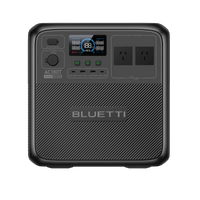












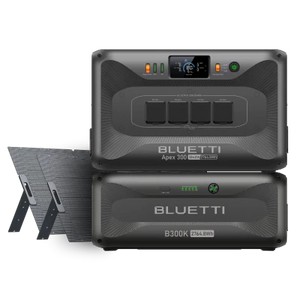





















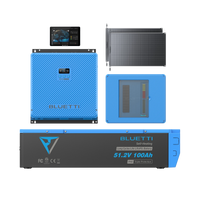





















![[Phased Out] BLUETTI B80P Expansion Battery | 806Wh](http://www.bluettipower.com.au/cdn/shop/files/202310025B80P_2000-2000px_4_4caa0c1c-4dab-4272-9e9b-2b7507e5bd81.jpg?v=1713777870&width=200)
![[Phased Out] BLUETTI B210P Expansion Battery | 2,150Wh](http://www.bluettipower.com.au/cdn/shop/files/2_08cf9ef3-03a4-4489-b641-d3edb8094896.webp?v=1716016566&width=200)
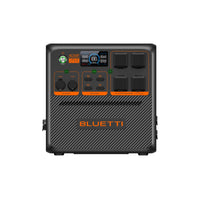


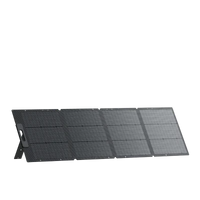


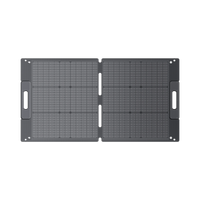





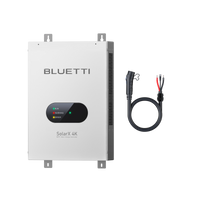






















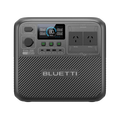

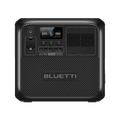






























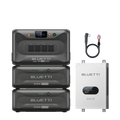



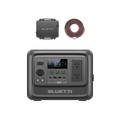





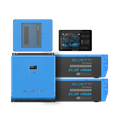














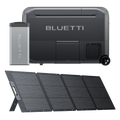




















![[Phased Out] BLUETTI B80P Expansion Battery | 806Wh](http://www.bluettipower.com.au/cdn/shop/files/202310025B80P_2000-2000px_4_4caa0c1c-4dab-4272-9e9b-2b7507e5bd81.jpg?v=1713777870&width=120)
![[Phased Out] BLUETTI B210P Expansion Battery | 2,150Wh](http://www.bluettipower.com.au/cdn/shop/files/2_08cf9ef3-03a4-4489-b641-d3edb8094896.webp?v=1716016566&width=120)


















